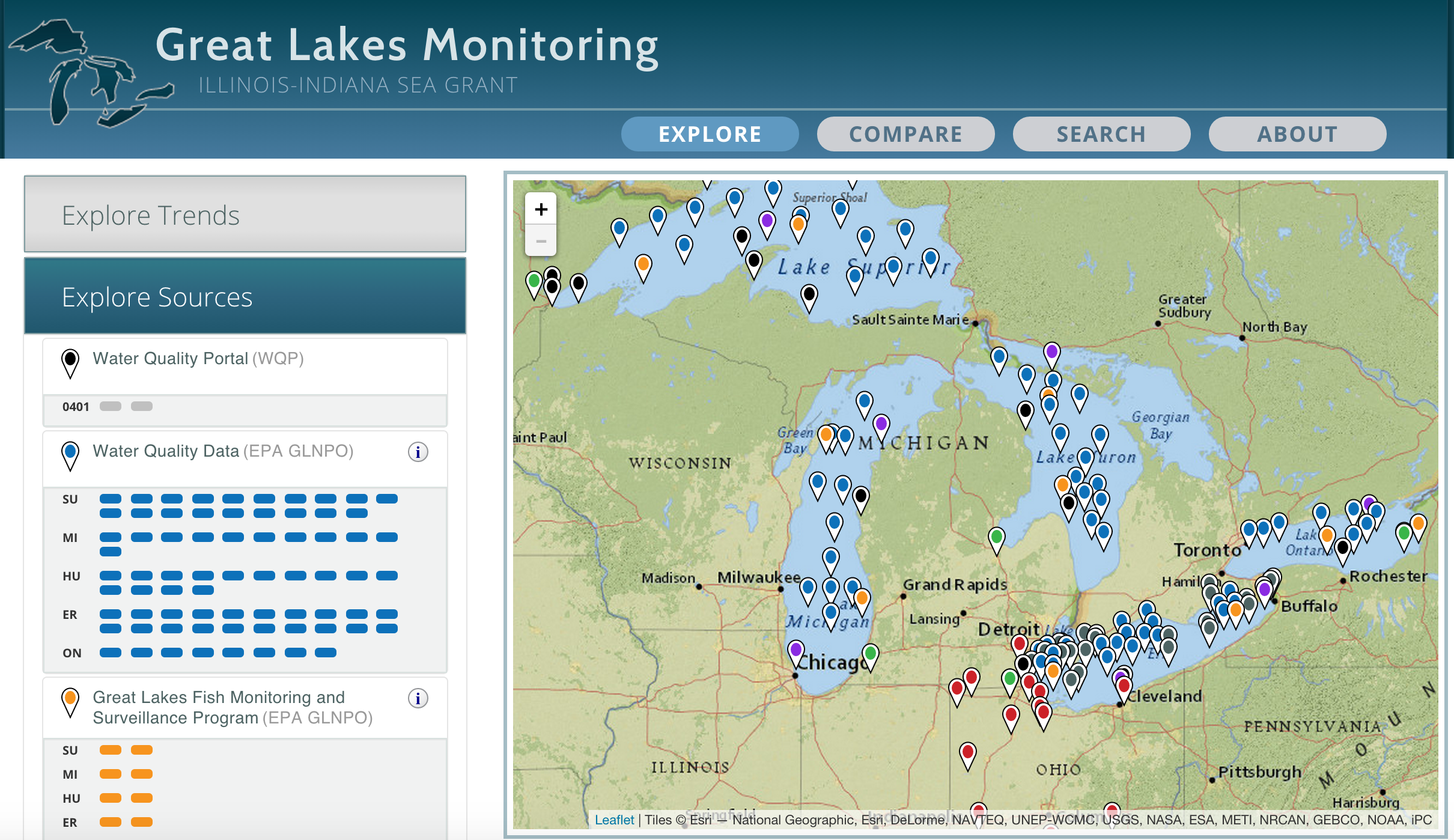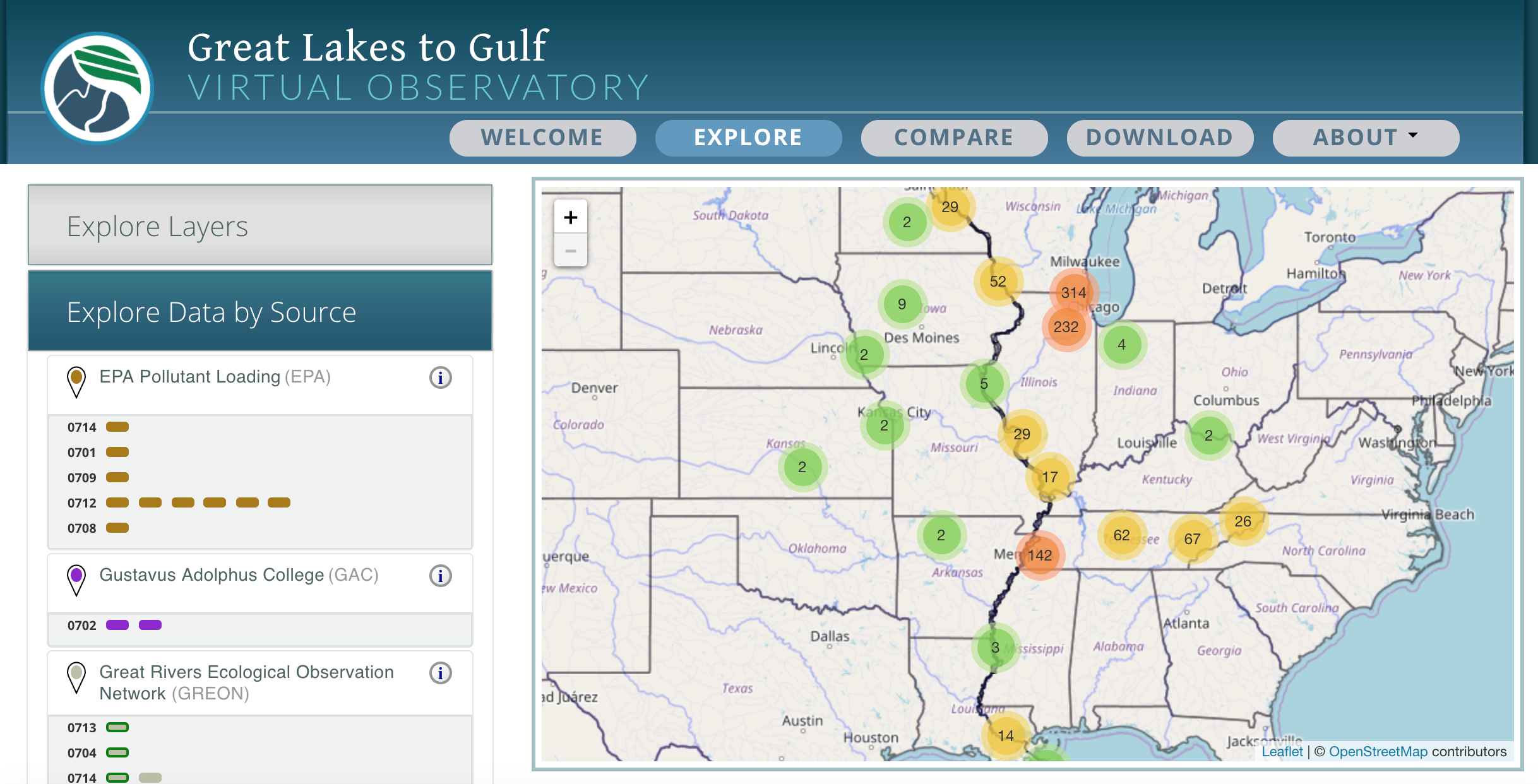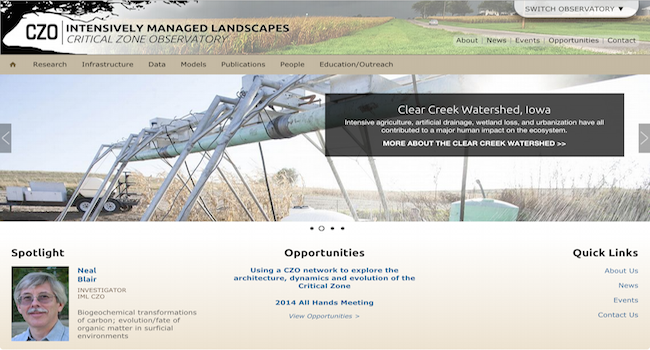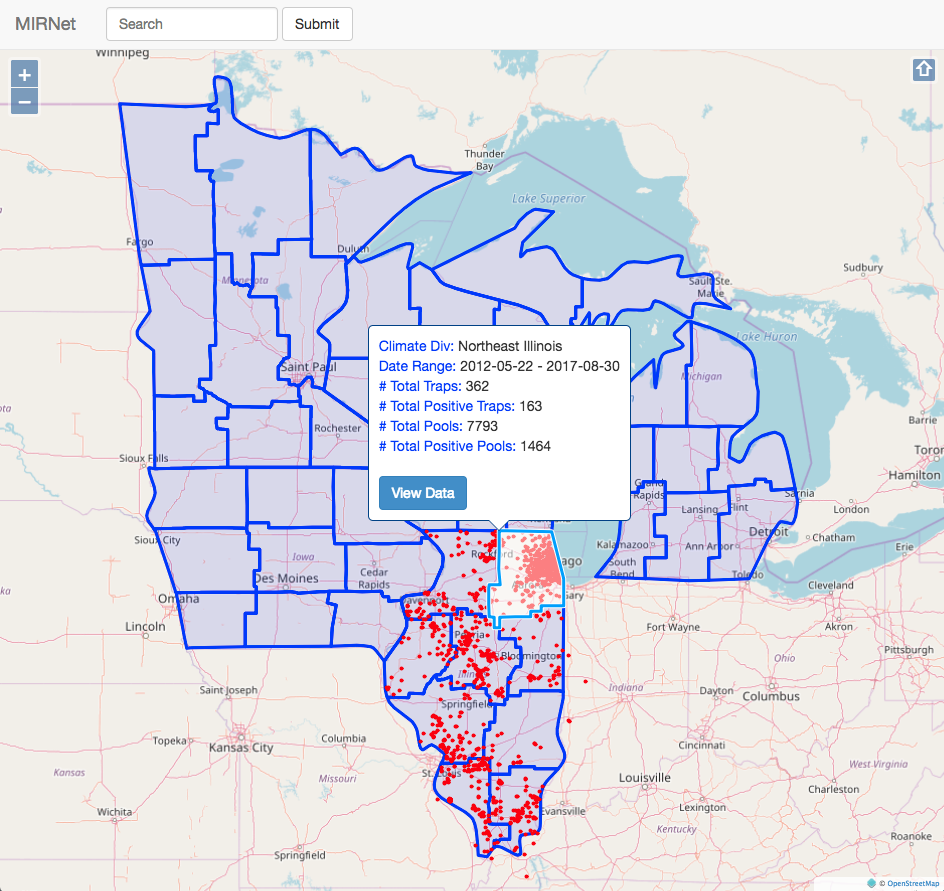GeoStreaming API
A REST API where you can interact with the data. Specific computation for visualizing data
is performed in the Geostreaming Api, including computations for bins for the data at different
time scales including day, month, season and year. It also calculate trends per parameter
for single sensors or a region.
Geodashboard
This is a web-application that allows users to browse and search geo-spatial data in a map.
It has visualizations for each location that can be customized to match the community needs.
We currently support time-series, box and whiskers, stacked line and stacked bar graphs.
Code is developed in React + Redux graphs are created with d3.js and new graphs can be easily added.
Parsers
Data from heterogeneous sources that include images collected from drones or field scanners,
sensors in the field, results of labs analyses, remote sensing data, or historical data from
heterogeneous sources can be ingested into the geostreaming API with the help of parsers.
A Python library
PyGeotemporal
has been created to facilitate writting new parsers.








